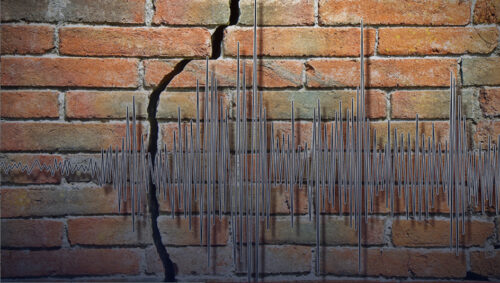地震信号を解析し、自然言語処理アプローチで断層の将来の物理状態を「自動充填」、地球への応用が期待される Analyzing seismic signals, a natural-language processing approach ‘auto-fills’ the future physical state of a fault in an earthquake machine, with potential applications in Earth
2022-10-08 アメリカ・ロスアラモス国立研究所(LANL)

ロスアラモスのチームは、斬新なアプローチで、実験室の断層から放送された音響放射にディープラーニングの変換モデルを適用して、摩擦状態を予測した。
このモデルは、波形から学習して、将来の断層摩擦と次のすべり現象がいつ起こるかを、過去の情報だけを使って予測しているのであって、対象となる将来の時間ステップのデータは一切使っていない。
このモデルは物理で制約されているわけではなく、システムの実際の挙動を予測するものである。
<関連情報>
- https://discover.lanl.gov/news/1007-earthquakes
- https://agupubs.onlinelibrary.wiley.com/doi/10.1029/2022GL098233
ディープラーニングによる変圧器モデルで将来の実験室内故障摩擦を予測する Predicting future laboratory fault friction through deep learning transformer models
Kun Wang,Christopher W Johnson,Kane C. Bennett,Paul A. Johnson
Geophysical Research Letters Published: 27 September 2022
DOI:https://doi.org/10.1029/2022GL098233
Abstract
Machine learning models using seismic emissions as input can predict instantaneous fault characteristics such as displacement and friction in laboratory experiments, and slow slip in Earth. Here, we address whether the seismic/acoustic emission (AE) from laboratory experiments contains information about future frictional behavior. The approach uses a convolutional encoder-decoder containing a transformer model in the latent space, similar to models used for natural language processing. We test the model limits using progressively larger AE input time windows and progressively larger output friction time windows. The results demonstrate that very near-term friction predictions are indeed contained in the AE signal, and predictions are progressively worse farther into the future. The future predictions by the model of impending failure in the near-term are remarkably robust. This first effort predicting future fault frictional behavior with machine learning will aid in guiding efforts for applications in Earth.
Key Points
- The limits of deep learning models are explored for predicting the future frictional behavior of laboratory earthquake slip
- A deep learning transformer model is applied to acoustic emissions broadcast from the laboratory fault to predict future frictional state
- Acoustic emissions are found to carry information for predicting future fault friction and imminence of failure
Plain Language Summary
Over the last 6 years it has been shown that machine learning is a powerful tool to learn about the inside of faults from the acoustic emissions that the fault broadcasts. For instance, the emissions can inform us of the instantaneous fault displacement and friction in addition to timing of an upcoming earthquake in laboratory experiments. Notably, it was further found that continuous seismic emissions contain a ‘fingerprint’ for the phenomenon of slow slip in Earth. Here we show that by applying a deep learning approach that has shown striking results in natural language processing and computer vision applications, that the acoustic emissions also contain foreshadowing information about the immediate future of fault friction. Remarkably, the emissions can tell us if the laboratory fault is about to fail, and how it will begin to recover. This approach will help guide efforts in predicting earthquake timing in Earth.


